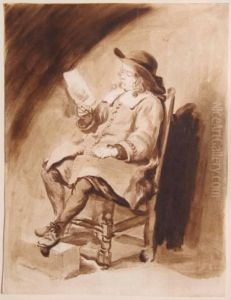Jurian Cootwyck Paintings
Jurian Cootwyck, born in 1600 and died in 1655, was a Dutch artist whose life and work were deeply intertwined with the cultural and historical milieu of the Dutch Golden Age. This period, spanning the 17th century, is renowned for its remarkable flourishing in arts, sciences, and trade, with the Netherlands emerging as a leading power in Europe. Cootwyck, though not as widely recognized as contemporaries such as Rembrandt or Vermeer, contributed significantly to the art scene of his time, particularly in the realm of engraving and printmaking.
Cootwyck hailed from a middle-class family in Amsterdam, a city that was rapidly growing into a major art and trade center. He showed an early aptitude for drawing and was apprenticed to a local engraver, a common practice for aspiring artists at the time. Through his apprenticeship, Cootwyck mastered the techniques of engraving and etching, which were vital for reproducing and disseminating artworks in the era before photographic reproduction. His work often depicted urban landscapes and architectural studies, capturing the burgeoning cities and intricate canal systems of the Netherlands with meticulous detail.
Throughout his career, Cootwyck remained closely connected to the intellectual circles of Amsterdam, which included philosophers, scientists, and fellow artists. This network influenced his work, leading him to incorporate elements of scientific accuracy and perspective into his engravings. His prints not only served as artworks but also as documents of urban development and architectural achievements of his time.
Despite his contributions, Cootwyck's work did not gain the lasting fame of some of his contemporaries. After his death in 1655, his engravings gradually fell into obscurity, overshadowed by the towering figures of the Dutch Golden Age. However, recent scholarship has begun to reassess his contributions, recognizing him as an important figure in the development of Dutch engraving and printmaking. Today, Jurian Cootwyck's works are studied for their technical skill and historical value, offering insights into the cultural and urban development of 17th-century Netherlands.
